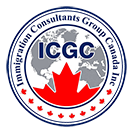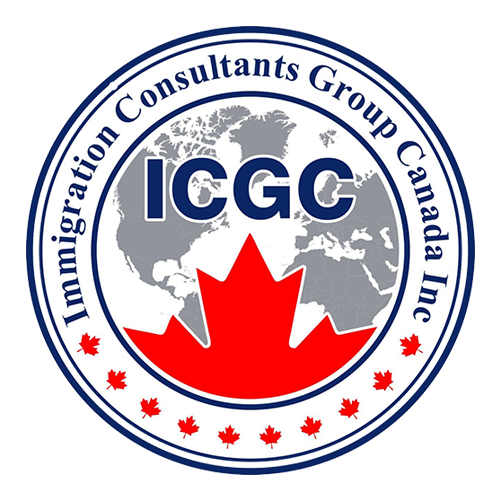How to immigrate to Canada from Qatar
Whether you’re a Qatar citizen or an expat in the country, Canada has immigration options for you.
If you’re thinking Canada might be your next destination but you don’t know where to begin, here’s a summary of some of Canada’s main economic immigration programs.
Canada’s immigration department, Immigration, Refugees, and Citizenship Canada (IRCC) classifies immigration into three categories: economic class, family class, and refugees. By far the most popular route is economic class immigration. These immigrants are eligible for permanent residency based on their work experience, education, and other economic factors. Family class immigration makes up the second largest amount. Canadians can sponsor their spouses, common-law partners, children, parents, grandparents and others under this category. Finally, refugees who are able to come to Canada if they are referred by the United Nations High Commissioner for Refugees (UNHCR), a designated referral organization, or a private group.
Every year, hundreds of thousands of immigrants come to Canada under its economic immigration program. Some people start in Canada as international students or temporary foreign workers, while others may be able to immigrate to Canada without ever setting foot in the country before. The following immigration programs are a selection of some of the main pathways that allow immigrants to come to Canada.
Express Entry
Express Entry is a points-based application management system for the following three immigration programs: the Federal Skilled Worker Program (FSWP) the Canadian Experience Class (CEC), and the Federal Skilled Trades Program (FSTP).
The Federal Skilled Worker Program is the most common pathway for candidates who have not worked or studied in Canada before. To be eligible for the FSWP, you need:
- at least one year of eligible work experience;
- a minimum Canadian Language Benchmark (CLB) of 7 on your English or French language test;
- at least one educational credential;
- to demonstrate proof of funds (if you do not have a valid Canadian job offer); and
- to get at least 67 out of 100 points on the FSWP scoring grid.
The Canadian Experience Class was developed to streamline the path to permanent resident status for those who already have experience living and working in Canada. To be eligible for the CEC, you need:
- at least one year of eligible work in Canada within the past three years; and
- a CLB 7 or higher for jobs that fall under National Occupational Classification (NOC) A category, or a CLB 5 for jobs that fall under the NOC B category.
The Federal Skilled Trades Program is a dedicated pathway for skilled trades workers to gain status as a Canadian permanent resident. To be eligible for the FSTP, you need:
- at least two years of skilled trades work experience within the five years before applying;
- a minimum CLB of 5 for speaking and listening and 4 for reading and writing in English or French; and
- to demonstrate proof of funds (if you do not have a valid Canadian job offer).
In order to get your profile in the Express Entry system, you need to be eligible for one of these programs. It is possible to be eligible for more than one at the same time.
Express Entry uses the Comprehensive Ranking System (CRS) to rank candidates’ profiles. The top-scoring candidates receive an Invitation to Apply (ITA) for Canadian permanent residence through Express Entry draws, which happen about every two weeks.
Once you receive an ITA, you can officially apply for Canadian immigration. You have 60 days from when you receive the ITA to send in your application. After that, IRCC aims to process 80% of applications within six months.
Provincial Nominee Program (PNP)
Most Canadian provinces and territories, except Quebec which has its own immigration system and Nunavut, manage their own Provincial Nominee Programs (PNPs). These programs offer pathways to immigration that set candidates up for economic success in their respective regions.
Some PNPs are managed by the Express Entry system. Eligible Express Entry candidates may be invited to apply for a provincial nomination. If you get the nomination, it’s an automatic 600 points added to your score, and it practically guarantees that you will receive an ITA in a subsequent Express Entry draw.
There are also PNPs that are managed by the province’s own application management system. It is not necessary to be eligible for Express Entry in order to take advantage of these programs. The province will evaluate your application based on the criteria of the PNP stream. If you are eligible, you will get a letter of nomination and be able to apply to IRCC for permanent residence.
Getting Canadian work or study experience
Having Canadian work or study experience can help open the doors to more Canadian immigration pathways.
If you want to study in Canada, you need a study permit. You can apply for one once you get a letter of acceptance from a Canadian institution. Study permits allow you to legally go to school in Canada, work part time during the school year and full time during scheduled academic breaks.
To qualify for certain immigration programs you need a Canadian education from a Designated Learning Institution (DLI). Many of the programs offered at these institutions will qualify you for a Post-Graduation Work Permit (PGWP), which will allow you to work in Canada for up to three years.
However, if you are done with your studies or cannot afford international student fees, you may be able to get a work permit. There are two types of work permit programs in Canada:
Temporary Foreign Worker Program (TFWP): Your employer needs to get a positive or neutral Labour Market Impact Assessment (LMIA) in order to support your work permit. The purpose of the LMIA is for employers to demonstrate to the Canadian government that the hiring of a foreign worker will not displace existing workers in Canada or place downward pressures on wages. One example of a TFWP is the Global Talent Stream. If you have a job offer for a certain tech occupation, or at a certain tech company, you may be eligible for expedited work permit processing under this stream.
International Mobility Program (IMP): An LMIA is not required because the work being done is considered of significant benefit to Canada, or part of a reciprocal agreement. Most foreign workers come to Canada under the IMP. Those looking to start a business in Canada or be self-employed may be able to get a significant benefit work permit, which is managed under the IMP category. If you are an entrepreneur or self-employed person, you need to show the Canadian government your activities in Canada will result in an economic, social, or cultural benefit.
Within these two categories are more than 100 work permit options.
There are more than one million job vacancies in Canada, and Canadian employers are facing a tight labour market. Welcoming immigrants is one of the ways that Canadians are seeking to fill gaps in the labour market, grow the economy, and make the country a better place.
source: cicnews.com


